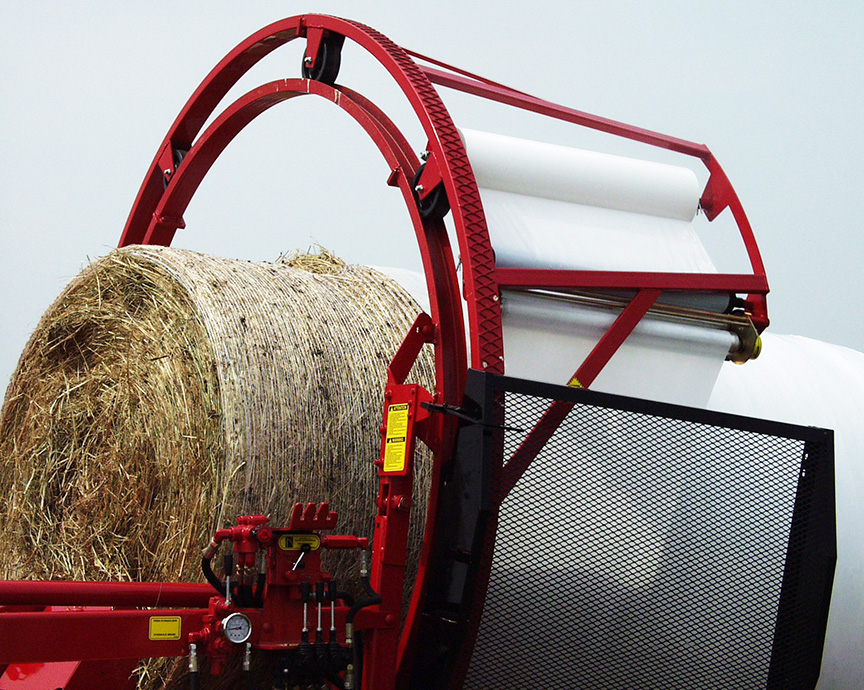Taking large round and large rectangular bales and wrapping them with white plastic to make bale silage (baleage) has become a common practice. A major reason for its adoption is to increase the chances of making quality forage when rainy weather does not permit making dry hay.
There have been a couple cases of botulism in the last year when small grain baleage was fed to cattle and horses. Proper fermentation is critical to reduce the chances of this tragic disease. The causative organism of botulism is the soil borne Botulinum clostridium. The toxin cannot form if the silage pH is less than 4.5. A contributing factor to the concern is a high ash content from soil contamination with harvest procedures.
The following are guidelines to successfully make and use baleage.
- Crop quality – Good fermentation is dependent upon a supply of readily fermentable carbohydrates. Overly mature forage will have less nonstructural carbohydrate.
- Moisture content – The best range of moisture content for proper fermentation is 50 to 60 percent. Uncut forage will be around 75 percent moisture. Generally the crop needs to wilt 6 to 24 hours to reach ideal moisture content to make baleage. Wilting time will be dependent upon crop type, yield, swath density and environmental conditions at harvest.
- Reduce soil contamination – During the tedding and raking procedures, set the equipment to reduce soil contamination in the swath and windrow.
- Bale density – A dense, tight bale improves fermentation as less pore space will be occupied by air. Proper fermentation requires an anaerobic environment.
- Bale shape – Bales should have similar outer dimensions so fewer air pockets result.
- Time between baling and wrapping – Bales should be wrapped as soon as possible after baling, ideally within 4 hours.
- Bale binding – Use plastic or untreated sisal twine, or plastic net wrapping to bind the individual bales at baling. Avoid treated sisal twine.
- Plastic – Tightly wrap each bale with six to eight layers of good-quality, 1-mil-thick plastic that is resistant to sunlight.
- Storage – Place the bales on a well-drained site. Inspect the bales often for the presence of holes in the plastic. Holes should be covered with ultraviolet light-protected plastic tape that can be purchased from the plastic provider. Do not use duct tape. Storing individually wrapped bales on end reduces holes caused by raptors, if a problem, since there is more overlap of wraps on the ends of the bale.
- Feeding – Utilize the bales within a year to reduce storage loss. Unwrap plastic on the baleage just prior to feeding to the livestock.
Following these guidelines should improve fermentation and baleage quality. When quality analyses are being done at a forage quality laboratory, it would be advised to get a pH measurement, too, to determine whether excellent fermentation was achieved.



